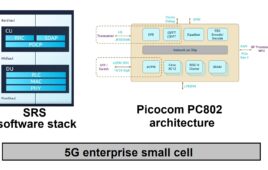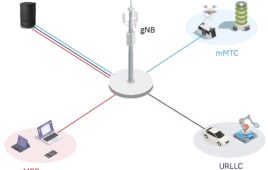The year 2020 seems like a long way off. Children born in 2003 will be freshman in college, your new iPhone will be five years older (or likely been replaced with something you wear at work and in the shower), but teleportation will likely still not be a viable option for the morning commute. That said, 2020 is also the target commercial roll-out year for 5G.
The normal cycle time from concept to technical standardization to commercial availability for next generation wireless networks is historically ten years. We are right now a little over half way to 5G availability. There may still be five years’ worth of white papers and debate to determine technology inclusion, functional architectures, and deployment strategies, but believe any parent and/or wireless telecom infrastructure professional when they say, “Man, that went fast. It seems like only yesterday…” Which means, it’s time to ramp up planning for 5G, and playing a deciding factor in that planning will be real estate.
5G – The Evolving Revolution
Like previous generations of mobile technology, 5G is evolving as a new superset of network technologies with an aim to cater for:
- 1000 times traffic volumes
- 10s of billions of connected devices
- 10-100 times higher end-user data rates
- Extremely low latency to achieve real-time video broadcast quality
- 10x end-user device battery life
- All type of different devices (mobiles, tablets, television, wearable tech, vehicles, the break room coffee machine…anything!)
By now you’ll have read that the technical standards for 5G are still in flux. However, the goal is ultimately to transition from today’s person-to-person communication model to a “network of things”; where people, objects, and data, both mobile and fixed, are part of an interlaced multi-level functioning singular communication system.
As everything becomes connected, the obvious leap is to synthesize now-available data from a multitude of sources into usable information. Information that will drive personal, business, and automated decisions and have societal benefits beyond the use cases we have thought of today.
Obvious issues around data security, data integrity, spectrum use, and interoperability with today’s commercial networks and devices will be addressed at the technology level of 5G standardization. However there are several significant functional challenges such as deployment standards and capital and operational costs that must be addressed as standards are solidifying.
Real Estate and Deployment Standardization
The largest speed bump in wireless network deployment today is real estate. Or more specifically the leasing, zoning, permitting of real estate required to successfully design and deploy a scalable network that provides the coverage and capacity demanded by the end user. At Parallel Infrastructure we are liaising with municipal land owners across the country and major carriers to reach consensus on ways to collaborate that will benefit both sides’ objectives when it comes to accessing available real estate to build much-needed infrastructure.
Next-generation 5G networks will be deployed by leveraging the heterogeneous network strategies of today; macro cell sites, small cell sites, indoor and outdoor distributed antenna systems, WiFi data off-load, etc. The 5G networks of the future will leverage high-capacity backhaul of all types (dark/lit fiber, licensed and unlicensed millimeter wave broadband fixed wireless, satellite). All 5G sites will require access to utilities, be fully accessible for maintenance and operational needs, and have adequate vertical co-locatable space at 20 feet to 100 feet in the air.
Due to the capacity, coverage, and latency requirements, 5G networks will be ultra-dense. These ultra-dense networks (UDNs) will have multiple access points for a given area. They will self-organize based on application, network utilization, and end-user requirements.
Hardware (primarily radios, integrated antennas), some form of backhaul, and utilities must be available at every UDN location. Although footprints will be significantly smaller, these requirements for co-locatable structures, available access and utilities are very similar to the infrastructure essentials required by today’s macro, small cell, and DAS networks. And therein lies the issue.
Despite the recent efforts of the FCC to streamline and expedite the deployment of broadband wireless infrastructure, real estate approvals for deployment at the state and local levels continue to face resistance. As an example, Montgomery County, Maryland recently filed a law suit against the FCC calling the new Infrastructure Order “unconstitutional, arbitrary and capricious, an abuse of discretion and otherwise illegal.”
It’s hard to deploy technology everyone wants when the infrastructure required for successful deployment is prohibited, or in many cases, vehemently opposed.
Call to Action
For 5G network deployment to be successful and timely, state and local governments must truly partner with the carrier and telecom infrastructure community as never before. And the partnership must be mutually beneficial.
At a minimum, the 5G community must:
- Determine standard configurations (size, dimension, weight, power and access requirement, footprint, etc.) for new technology deployment. When standards are mutually agreeable and followed, deployment may accelerate.
- Assist the state and local public officials in understanding the economic and technological benefits of deploying new technology. If the public can benefit from the service provided and the community enjoys both job creation and new revenue sources, deployment may accelerate.
- Leverage available state and local collocatable assets (buildings, rooftops, streetlights, utility poles, schools, existing public safety infrastructure, existing vertical real estate and towers) wherever possible. Leveraging otherwise fallow real estate to generate revenue at zero cost to the public should accelerate deployment.
At a minimum, state and local governments must:
- Make publicly owned real estate available for standardized 5G wireless infrastructure development. This must be inclusive of stabilized standards, rents, and timelines for zoning and permitting approvals.
- Maintain reasonable financial expectations for the use of publicly owned real estate. 5G technology deployment will be prolific, but small in footprint. Rent and revenue sharing payments must be proportional to the space/use ration or will otherwise become cost prohibitive.
- Allow the wireless infrastructure industry to move quickly. This must entail a standard set of streamlined processes, procedures, and accounting for the deployment of network and of rent and revenue sharing payments.
Ed Myers, is the Vice President of Business Development and Strategic Initiatives at Parallel Infrastructure.




